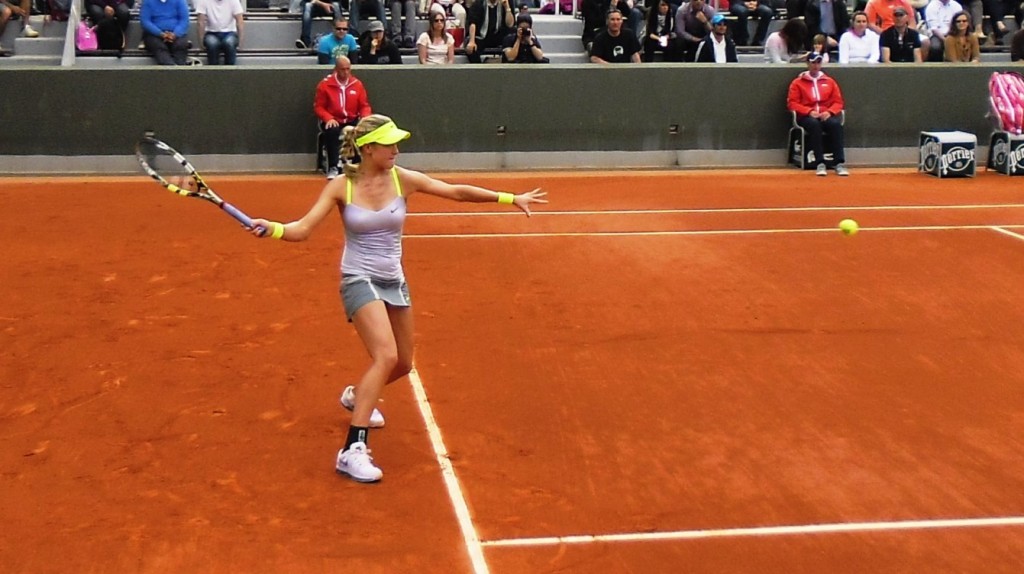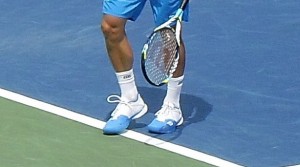Despite the title of the article, for many, it could not come any sooner. After years of Serena Williams’ supremacy and the duo of Victoria Azarenka and Maria Sharapova specializing in failed attempts to dethrone the American, but exceling in the shrieking department, the W.T.A. desperately needs an injection of new and fresh faces into the spotlight.
Fret no more! They are slowly but surely arriving. Three of them were at the Charleston WTA Tournament’s semi-finals, but their road to greatness has been progressing for some time now.
Furthermore, they don’t act like unattainable, superior divas. They actually spend more time praising their opponents in the after-match conferences than the lack of quality in their own game. They don’t necessarily believe the sport revolves around them – read as “I won because I am great, I lost because I played bad, and the girl on the other side of the net is of no consequence.” They behave far more mature than today’s star players did when they were up-and-coming hopefuls.
Eugenie Bouchard (pictured below) is neither jumping up and down for minutes after a win, nor sporting a bitter-face accompanied by comments on how bad she played without a word of credit to her opponent. If you wish to be impressed by the composure and the maturity of a young player in front of cameras, just observe one of her interviews. Belinda Bencic, at 17, keeps her emotions at check whether she saves a match point or chokes one away. You don’t hear the 20-year-old Jana Cepalova complain about being without a coach, a family in her box, or the lack of a hitting partner while she travels in a foreign country playing tournaments. She goes on her business and reaches the finals in Charleston, not to mention defeating Serena Williams, Elena Vesnina, and Daniela Hantuchova on her path. In fact, if it was not for the title-winner Andrea Petkovic mentioning in her after-match speech how much she admires Cepelova for accomplishing that without anyone on her corner, not many people would have even been aware of that remarkable anecdote. You are not likely to witness Caroline Garcia, the 20-year-old French player, talking about how “embarrassed” she is, after losing to a player ranked lower than her.
These upcoming and fresh faces constitute what WTA Tour desperately needs. The top players of today ignore the fans for the most part, unless they are fulfilling a contract requirement dictating that they smile for pictures and have a few moments with a number of hand-picked fans for a certain function or a cause. They cannot stand each other and maintain no friendly contact other than the handshake at the end of the match. The other players have expressed many times how these few divas harbor a considerable distance from the rest of the players. When your peers cannot even identify with you, it is naïve for the WTA to expect fans to do so.
John Isner said at the Cincinnati tournament that the top players in the ATP were all “class guys” and that everyone got along incredibly well. Juan Martin del Potro confirmed Isner’s observation. They both talked about how they admire each other as people and as players. Friendships among the top players are well-known. They also don’t mind staying on the court after their practice sessions and after matches to accommodate as many fans as possible, signing autographs. This brief reference to the ATP equivalent of how top players behave was simply to preemptively answer the handful of fans of those divas who will attempt to strike back with the feeble “the top women’s players’ job is not to entertain fans” argument. Fans love to watch Roger Federer, Novak Djokovic, Rafael Nadal, Andy Murray, Jo-Wilfried Tsonga, David Ferrer and others, because they interact with fans, and remain attainable to the average tennis fan.
It is obvious that the WTA needs a major facelift in terms of who represents its stardom. Being noteworthy athletes can only carry your popularity so far and will prove fatal when the attention begins to diminish. The interest in women’s tennis is nothing like it used to be a decade ago, and there are no notable rivalries (please do not say Williams vs. Sharapova).
This up-and-coming group is talented, athletic, personable, and spectacular to watch. If you have not yet watched Bencic’s sizzling ground strokes, Cepelova’s drop shots, Garcia’s ability to accelerate the ball, Simona Halep’s footwork, and Zarina Diyas’ calmness on the court, and Sloane Stephens’ powerful ground strokes, you do not need to worry. You will get plenty of chances to see them in the near future. I will predict – for the WTA’s sake as much as my own – that by the spring of 2016, we will see a different layer of players fighting for the big titles while the divas of today will be trying to come to terms with what is hitting them. Moreover, instead of hearing yet again the excuses with regards to their games, tennis fans will embrace the change of layer at the top of the women’s game.


